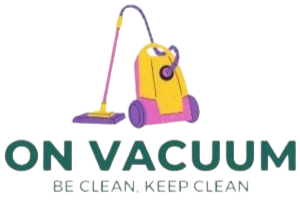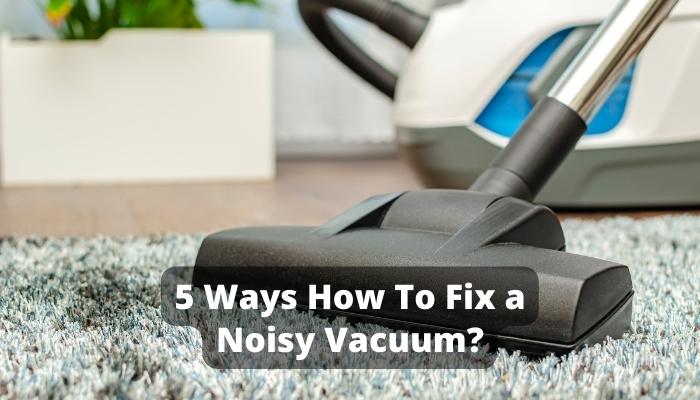Annoyed by a loud vacuum? Dive into our comprehensive guide and quiet your machine. Get DIY solutions for a serene cleaning experience.
Introduction: Understanding Vacuum Noises
Vacuums are a modern marvel, aren’t they? But have you ever wondered why your trusty machine suddenly sounds like it’s gearing up for a rock concert? Understanding vacuum noises can be the first step to identifying and rectifying potential problems. Here’s a deep dive into the mysterious world of these sounds.
Common Reasons for a Noisy Vacuum
Now, what could make your vacuum scream for attention?
Blockages in the Air Pathway
Imagine drinking a thick milkshake through a narrow straw. It’s hard. The same principle applies to vacuums. The vacuum struggles when there’s a blockage in its air pathway, often resulting in a high-pitched whine or a strained noise. This could be due to accumulated dirt, debris, or even foreign objects caught in its path.
Worn-out or Damaged Belt
The belt of a vacuum is like the heartbeat of the machine. The vacuum won’t operate smoothly if worn out or damaged. A slipping or misaligned belt can create a distinctive flapping or slapping sound.
Malfunctioning Motor
A vacuum’s motor is its power source. If there’s a problem with the motor, your vacuum won’t shy away from letting you know. Grinding, buzzing, or humming noises often indicate motor issues.
How to Troubleshoot a Noisy Vacuum
Ah, so you’ve pinpointed the pesky sound! But, what’s the next move to silence it?
Checking the Air Pathway
First, switch off and unplug the vacuum. Check the hose, brush roll, and other pathways for blockages. Often, simple removal of the debris can solve the problem. Isn’t it great when solutions are this easy?
Examining the Belt
If your vacuum uses a belt, inspect it for wear and tear. Belts are quite budget-friendly and simple to switch. If you spot any wear and tear, swap them out pronto! As the saying goes, better safe than sorry.
Inspecting the Motor
Now, this is tricky. Suppose you suspect the motor is the culprit. In that case, it might be time to consult a professional or consider purchasing a new vacuum. Motors are complex; sometimes, it’s best left to the experts.
Tips to Maintain a Quiet Vacuum
Want your vacuum to purr instead of roar? Here are some tips:
Regularly Clean Filters and Brush Rolls
Just like how we need regular check-ups, vacuums do too. Cleaning filters and brush rolls can ensure efficient airflow and reduce the chances of blockages.
Replace Damaged Parts Promptly
Don’t wait for your vacuum to break down. If a part looks worn out or damaged, replace it. This not only prolongs the life of your vacuum but ensures a quieter operation.
Opt for Quality Replacement Parts
It’s tempting to go for cheaper parts, but quality matters. Opting for good quality replacement parts can make a world of difference in your vacuum’s performance and noise levels.
Read more about How Many Watts Does a Dyson Vacuum Use?
Tools Needed for Repair
You wouldn’t go to battle without armour, would you? Similarly, having the right tools can make the process smoother and more effective when fixing your vacuum. Let’s get our toolkit ready!
- Screwdriver Set: To open up the vacuum and access internal parts.
- Replacement Belt: In case the old one is worn out.
- Cleaning Brush or an Old Toothbrush: To brush off dirt and debris.
- A Pair of Gloves: Because cleanliness is essential, and so is the safety of your hands.
- Torch or Flashlight: To peek into the darker nooks and crannies.
- Replacement Filters: If yours are too dirty or damaged.
- Needle-nose Pliers: For pulling out stubborn debris or realigning parts.
- Lubricating Oil: For any parts that might need some smoothing out.
- A Multimeter: If you need to check the electrical components of the motor.
Step-by-Step Guide to Fixing Common Noise Issues
Ah, the sounds of a vacuum gone rogue! But fear not. We’re about to restore harmony to your cleaning sessions with these steps.
Clearing Air Pathway Blockages
- Safety First!: Unplug the vacuum from the power source.
- Inspect the Hose: Detach the hose and look through it. If it’s missing, you’re probably dealing with an obstruction.
- Clear the Blockage: Gently remove the obstruction using needle-nose pliers or a straightened coat hanger.
- Check the Brush Roll: Hair and fibres can sometimes get tangled around the brush. Use scissors to cut away these tangles.
- Inspect and Clean Filters: If your vacuum has filters, remove them and clean them well. If they’re too worn out, replace them.
Replacing a Damaged Belt
- Access the Belt: Unscrew the vacuum’s bottom plate to expose the brush roll and belt.
- Examine the Belt: If it’s stretched, frayed, or broken, it’s time for a change.
- Remove the Old Belt: Slide the brush roll out of its place and remove the old belt.
- Install the New Belt: Place the new belt over the motor shaft and then over the brush roll, ensuring it fits snugly.
- Reassemble: Remove the brush roll, ensuring it spins freely. Screw the bottom plate back on.
Addressing Motor Issues
- Consult the Manual: Always check the vacuum’s manual before diving in. Sometimes there are specific instructions or warnings about motor issues.
- Check for Obvious Damage: With the vacuum unplugged, open up the motor compartment and check for any visible signs of damage or burnt components.
- Test with a Multimeter: If you’re comfortable doing so, use a multimeter to check the motor’s continuity. If there’s no continuity, the motor is likely dead.
- Lubricate: Sometimes, the motor’s bearings can get noisy. A little lubricating oil can help. However, be sure you’re using the right oil for your vacuum’s motor.
- Consider Professional Help: If you’re unsure or the motor seems beyond a simple fix, it’s best to consult a professional or consider replacing the vacuum.
Tips to Maintain Your Vacuum and Reduce Noise
Everyone loves a little peace and quiet, especially during a cleaning spree. To ensure your vacuum remains a silent helper, follow these maintenance tips:
- Regular Cleaning: Just like how we feel rejuvenated after a shower, vacuums love a good cleaning too. Clean the dust bin or change the vacuum bag frequently.
- Check the Filters: You might have multiple filters depending on your vacuum model. Make it a routine to clean or replace them.
- Untangle the Brush Roll: Hair, threads, and other debris can get tangled around the brush roll. Periodically, please give it a good inspection and a clean.
- Use Genuine Parts: When replacing parts, always opt for genuine parts. They’re specifically designed for your vacuum model and ensure optimal performance.
- Store Properly: Always store your vacuum in a dry place, away from direct sunlight. This prevents wear and tear from environmental factors.
- Avoid Water: Keep your vacuum away from liquids unless you have a wet-dry vacuum. Water can damage the motor and other components.
When to Consult a Professional
While many minor issues can be DIY fixes, sometimes it’s best to leave things to the experts. Here’s when you should consider professional help:
- Motor Malfunctions: If you suspect motor problems and the usual fixes aren’t working, it might be time to consult an expert.
- Electrical Issues: Sparks, smoke, or any electrical anomalies are serious. Refrain from attempting to fix these yourself.
- Repeated Noise Issues: A professional could pinpoint the underlying issue if you’ve tried all the fixes and your vacuum still sounds like it’s auditioning for a rock band.
- Broken or Damaged Parts: Some parts require expertise to replace, especially internal ones. If you need more clarification, seek professional advice.
Conclusion: Enjoy a Quieter Cleaning Session
Vacuums are like the unsung heroes of our homes, tirelessly cleaning up after us. But they don’t need to
be the loudest member of the household. With regular maintenance, a keen ear for issues, and timely professional consultations, you can ensure your vacuum remains a quiet and efficient companion. So next time you’re cleaning, enjoy the serenity of your space, knowing your vacuum’s got your back, silently.




